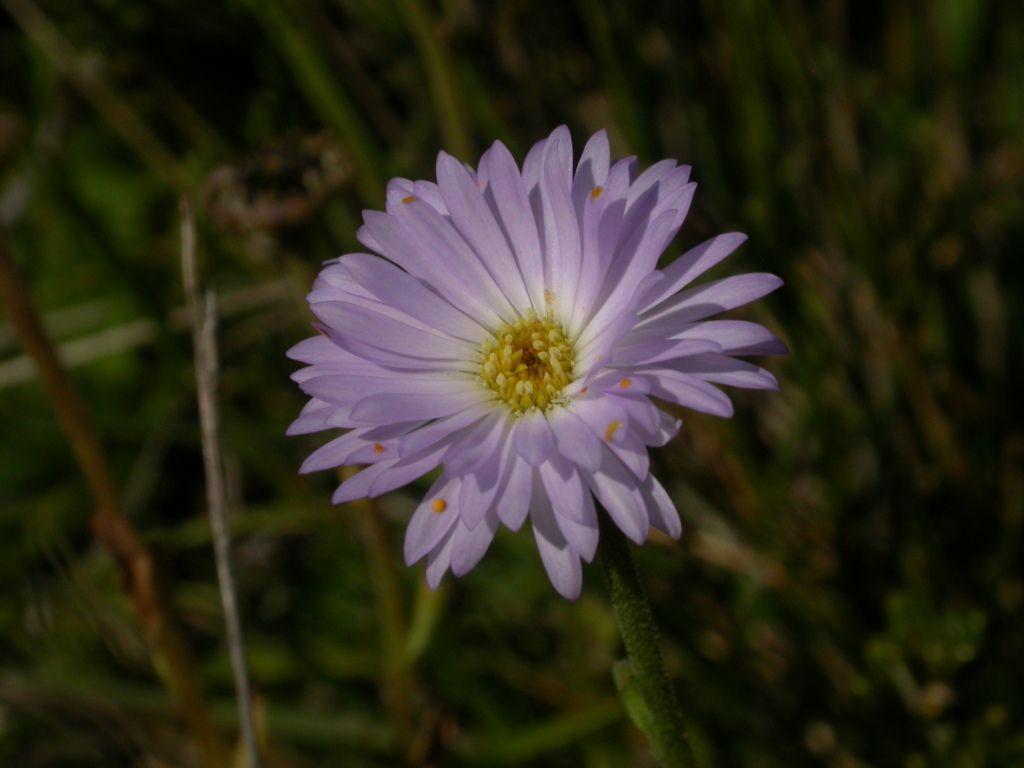Brachyscome foliosa
P.S.ShortStoloniferous perennials; flowering stems erect, 7–20 cm high. Leaves mostly rosetted at base, oblanceolate or spathulate, 1.5–3.8 cm long, 3–11 mm wide, shallowly 5–13-lobed, with sparse to rather dense glandular hairs, margins sometimes scarious, bases not or slightly dilated. Flowering stems 1 per tuft, with stalked, glandular and scattered, septate, eglandular hairs, stem-leaves 3–14, oblanceolate, lobed or entire. Bracts c. 12–22, c. 1-seriate, c. equal, elliptic to narrowly elliptic, 4–6 mm long, 1.2–2 mm wide, thinly herbaceous, with narrow scarious margins and scarious apices, upper part of bracts often purplish, outer surface with sparse to somewhat dense glandular hairs, edges of bract margins sometimes with scattered hairs; ligules c. 10 mm long, white or mauve. Cypselas obovate, 1.5–2.4 mm long, 0.8–1.2 mm wide, blackish; pappus c. 0.1 mm long. Flowers Dec.–Feb.
EGL, HNF, VAlp. In Victoria confined to a few locations on the Bogong and Dargo High Plains, and Cobungra area; a rare species of tussock grassland and alpine herbfield, often on basaltic soils.
Previously referred to as Brachyscome tenuiscapa. This species is now considered endemic to Tasmania and is distinguished from Brachyscome foliosa based on its brown or purplish-brown cypselas rather than black cypselas, the fewer leaves on the scape, and the fewer lobes on the leaves (Short 2014).
Two cypselas in the holotype are triquetrous but are assumed to be an abnormality (Short 2014).
 Spinning
Spinning
